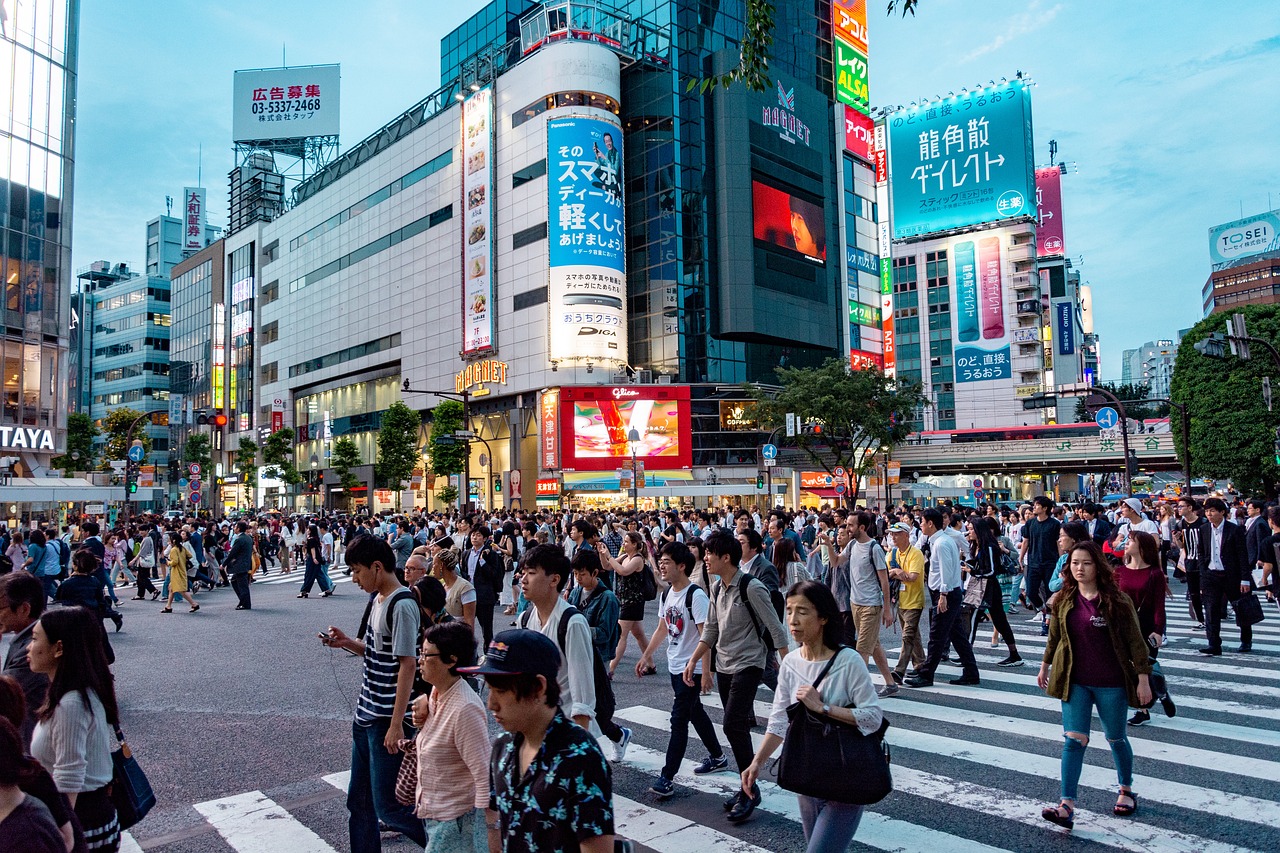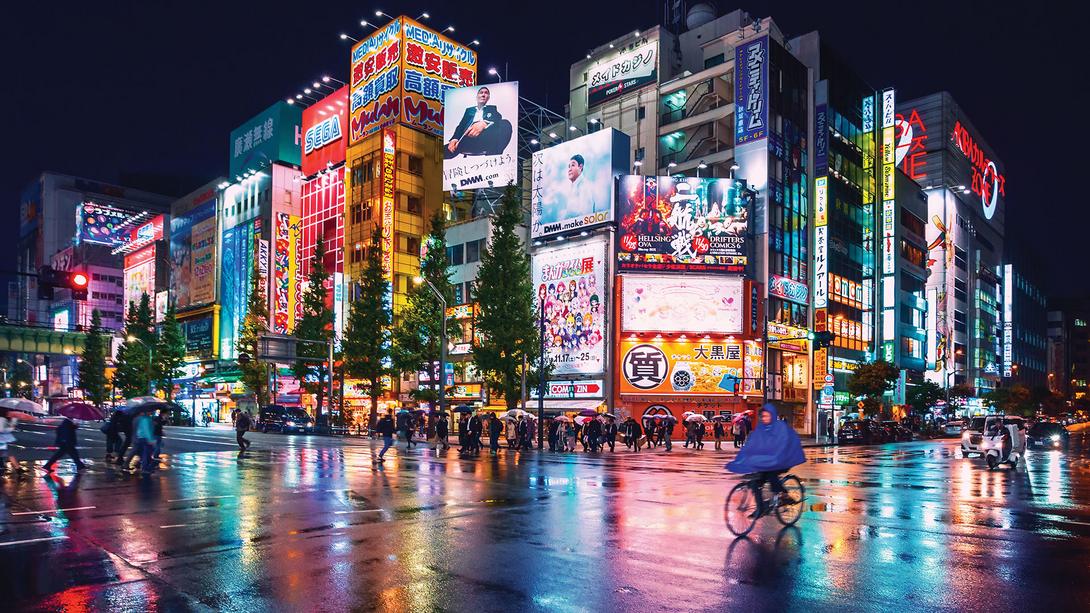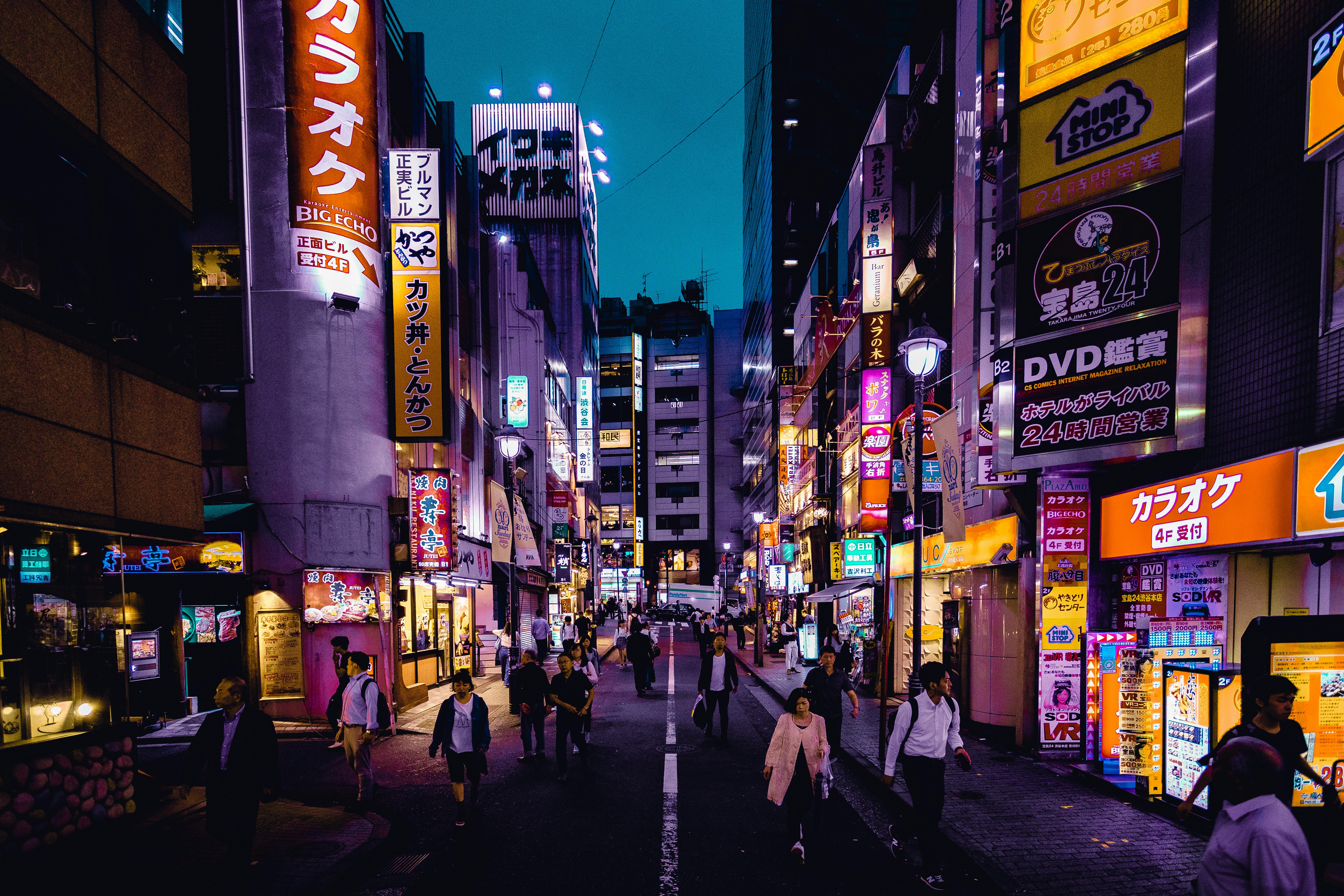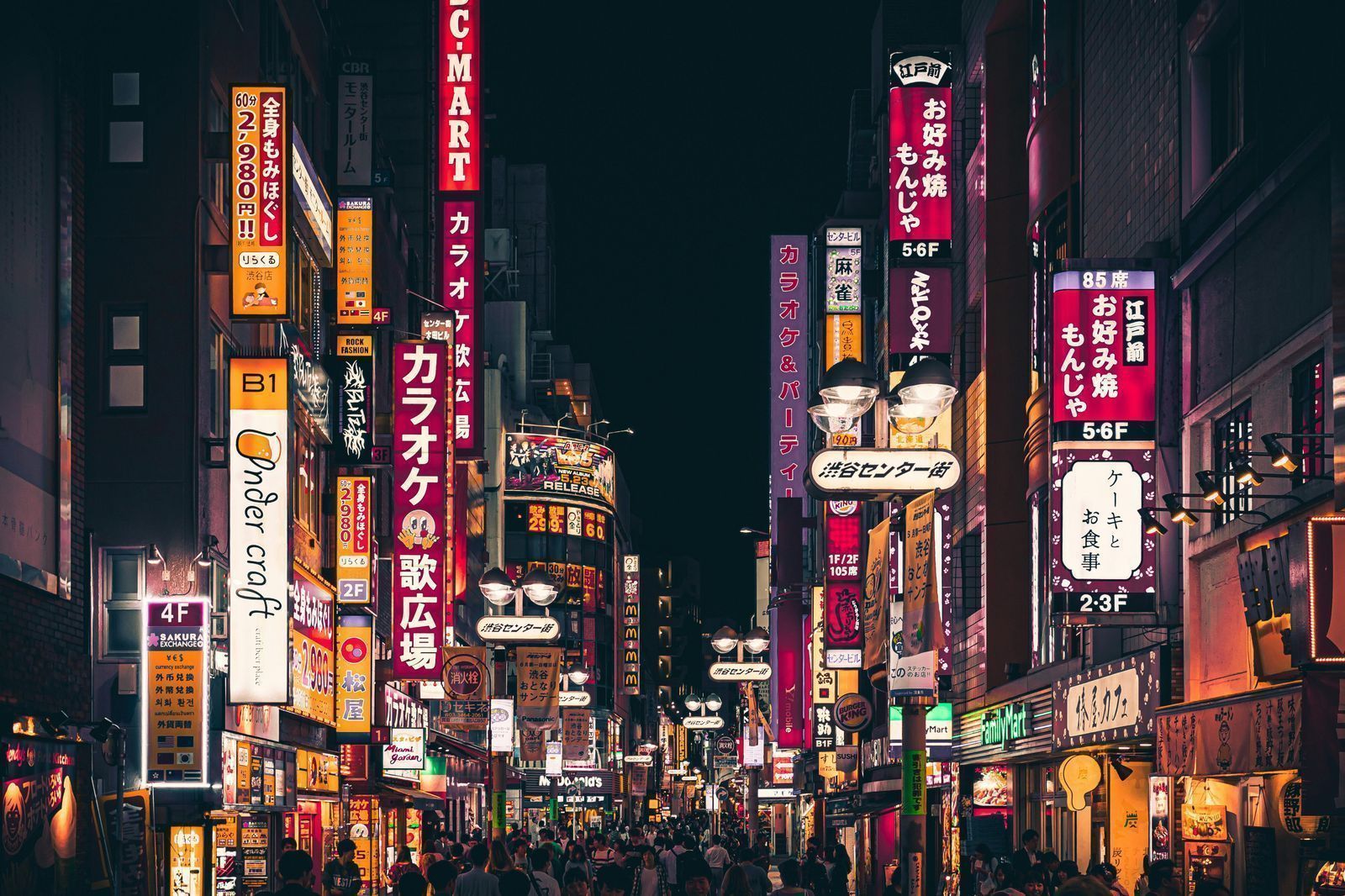Top Seller

Is Japan Worth Visiting? Where to Go, What to Do & How Long to Stay
In this post...
- Why Japan Captivates the World
- The Pros of Visiting Japan:
- Common Concerns About Visiting Japan:
- Best Cities to Visit in Japan
- Best Things to Do in Japan
- Getting Around Japan: JR Pass, Metro Cards, and Tips
- Best Japanese Food: More Than Just Sushi
- Staying Connected: Why You Should Use an eSIM in Japan
- Final Travel Tips for Japan
- So, Is Japan Worth Visiting?
- FAQs about Travelling in Japan
Japan is absolutely worth visiting. From ancient temples and serene bamboo forests to neon-lit cities and bullet trains, it’s a mix of tradition and modern life unlike anywhere else. The food is amazing, the country is safe and clean, and it’s great for solo travelers, couples, families, or groups. This guide covers where to go, what to do, how to get around, and how long to stay. With the yen currently favorable, now is a perfect time to visit.
If you want the full tips and inside scoop on traveling in Japan, you’re in for a treat.
Why Japan Captivates the World
Japan has an irresistible global allure and an impressive cultural reach. It’s the birthplace of sushi, samurai, Studio Ghibli, and some of the world’s most innovative tech (and toilets). Culturally rich, a feast for the senses and incredibly safe, it offers a travel experience unlike any other. Whether you're a foodie, a nature lover, a history buff, or a diehard anime fan, Japan has something to offer you.
The Pros of Visiting Japan:
- Cultural Depth: From Shinto shrines in Kyoto to legendary sumo matches in Tokyo, Japan offers immersive experiences grounded in centuries of deeply-rooted tradition. It’s one of the few places where ancient culture and spiritualism is preserved, practiced and felt daily, alongside the high-speed pace of modern life of Salarymen and Office Ladies!
- Safety: Japan consistently ranks as one of the safest countries in the world. Even major cities feel extremely clean, calm and orderly and everything just works as it’s supposed to. Solo travelers, especially women, often report feeling secure and respected.
- Cuisine: Sushi, ramen, tempura, and izakaya fare are just the start. Not to mention delicious beer, sake and whiskey. Japan is a food lover’s paradise, and it’s surprisingly vegetarian-friendly, especially in places like Kyoto.
Common Concerns About Visiting Japan:
- Cost & Budgeting: Although, economically, it’s a good time to visit, Japan still isn’t dirt cheap, but it’s not as expensive as you might think. Budget accommodation, convenience store meals (which are amazing, by the way), and JR Passes help keep expenses in check. But bizarrely, prices can vary wildly in cafes and restaurants that are right next to each other. So always do your research and check places Google rating on maps, and more importantly, the price in ¥ you can expect to pay…
- Language Barrier: While Japanese locals are extremely friendly and helpful, English isn’t widely spoken outside of tourist areas. However, signage is often bilingual, and translation apps like Google Translate work well. A little effort with basic Japanese phrases goes a long way. It’s also worth noting that Japan doesn’t exactly have the social hostel culture of South East Asia or South America, and with it being harder to communicate with locals, some solo travellers have reported feeling a little isolated on their trip.
How Long Should You Stay in Japan?
If you’re wondering how long to stay in Japan, the answer depends on your travel style and priorities. And your annual leave of course.
- 7 Days: Ideal for a highlights-only trip. Think Tokyo and Kyoto with a day trip or two. Perfect if you're short on time.
- 10–14 Days: The sweet spot for first-timers. This allows you to explore major cities, soak in hot springs, and even get a bit off the beaten track and take in cultural towns like Nara or Kanazawa.
- 3+ Weeks: Go beyond the Golden Route. Explore rural Japan, lesser-known islands, embark on a foodie pilgrimage up north in Hokkaido, or even venture out to historically significant sites like Hiroshima for the moving Peace Memorial Park and Museum.
Best Cities to Visit in Japan
So, which cities are the best to visit in Japan? These five are the classic picks for first-time visitors:

- Tokyo: A pulsating capital where tradition meets innovation. One minute, you’ll feel you’re on the neon-drenched futuristic set of Blade Runner, the next, brushing shoulders with locals in a tiny whiskey jazz bar. Visit Shibuya Crossing, Meiji Shrine, teamLabs’ digital art museum, and indulge in high-tech shopping and street eats.
- Kyoto: Japan’s spiritual heart. Wander through ancient temples, shinto shrines, geisha districts, and the famous Arashiyama Bamboo Grove. If you’re lucky, the cherry blossoms will also be in bloom.
- Osaka: Known for its street food (takoyaki and okonomiyaki are must-tries), laid-back locals, and vibrant nightlife. For a real cultural experience, you can nab tickets to an Osaka Tigers baseball game and support Japan's premier team in the country’s most popular sport.
- Hakone: Perfect for hot springs (onsen), impressive Mount Fuji views (sadly only visible about one third of the year), and a break from city chaos.
Best Things to Do in Japan
There’s absolutely no shortage of things to do in Japan. Here are some unique experiences you shouldn't miss:
- Sushi Experiences: Take a sushi-making class or eat at a classic conveyor belt restaurant. For the adventurous, try a standing sushi bar. If you’re a real foodie, seek out one of the country’s many Michelen starred sushi restaurants - often found in such humble locations as subway stations.
- Temple & Shrine Visits: Fushimi Inari Taisha in Kyoto, Senso-ji in Tokyo, and Todai-ji in Nara are unforgettable and spiritually important.
- Cherry Blossom Viewing: If you're visiting in spring, hanami (flower viewing) is a national pastime. Tokyo, Kyoto, and Kanazawa offer stunning spots for postcard-perfect photo opportunities.
- Anime & Pop Culture: Akihabara in Tokyo is an anime paradise, and Pokémon Centers are a hit with fans of all ages. Anime is simply huge in Japan, and often the top cinema box office hits are animated. Don’t miss the Ghibli museum in Tokyo, or the recently opened Ghibli Park in Aichi, for a chance to see Miyazaki’s fantastical creations brought to life.
- Shopping: Browse everything from high-end boutiques in Ginza to quirky 100-yen stores for affordable souvenirs. Personally, we love the discount store trend of sweatshirts and t-shirts with seemingly nonsensical or random English phrases on them!
Getting Around Japan: JR Pass, Metro Cards, and Tips
Japan’s public transportation is clean, efficient, and foreigner-friendly.
- JR Pass: If you're planning to visit multiple cities, a Japan Rail Pass can save you money on long-distance Shinkansen (bullet trains). Reserve it before you arrive. Travelling on a highly efficient and comfortable Shinkansen, or bullet train, is truly something to be experienced.
- Metro Travel: In major cities, grab an IC card (Suica or Pasmo) to tap on/off subways and buses without buying individual tickets. The metro is also incredibly efficient, but can get insanely busy during rush hour. So try to avoid it during these hours unless you want to meet the ‘passenger pushers’; men employed during rush hour to ‘help’ (read: push) people onto crowded trains.
Pro Tip: Google Maps works well for train schedules and transfers.
Best Japanese Food: More Than Just Sushi
Food in Japan is an adventure for your taste buds. Try local specialties in each region and don’t miss out on:
- Ramen: Tonkotsu in Fukuoka, miso in Sapporo, and shoyu in Tokyo. Always hearty, spicy and delicious.
- Street Food: Takoyaki in Osaka, mochi in Kyoto, and yatai stalls in Fukuoka.
- Vegetarian Options: Look for shojin ryori (Buddhist cuisine), tofu dishes, and the growing number of vegan cafes in Tokyo and Kyoto.
- Torisashi: Only for the truly brave among you... This is thinly sliced raw chicken, often eaten with dipping sauces like soy sauce and wasabi.
Staying Connected: Why You Should Use an eSIM in Japan
Navigating Japan is much easier when you’re connected. With an unlimited AU Japan eSIM from Sim Local, you can get mobile data stress-free, no need to track down a local SIM card shop or WiFi.
AU Japan is one of the country’s most trusted mobile networks, known for fast, reliable coverage whether you’re in the city, by the coast, or out in the countryside.
With our AU Japan eSIM plans, you get:
- Instant activation and no need to swap SIM cards, which is really helpful in a country where English isn’t widely spoken.
- Easy access to maps, translation apps, train times, and restaurant reviews.
We’ve rounded up the best Japan AU eSIM options for you, based on how long you plan to be in Japan.
Best Japan eSIM for 4 Days:
Best Japan eSIM for 7 Days:
Best Japan eSIM for 10 Days:
Best Japan eSIM for 15 Days:
Learn from our Head of Product, Georgia Brivida, whether unlimited data really lives up to its name and why Sim Local’s UNLIMITED eSIM plans are perfect for travellers. 👇
Final Travel Tips for Japan
- Pack light: Hotels and transport stations are compact; luggage forwarding services are available and affordable.
- Cash is king: Surprisingly, for such a technologically advanced country, cash still rules in Japan. While cards are gaining popularity, many places still prefer yen. Carry cash, especially outside major cities.
- Mind the manners: Being respectful of local customs is incredibly important to Japanese people (even if they’re sometimes too polite to tell you otherwise). Quiet on trains, shoes off indoors, and always queue.
- Book ahead: Reserve hotels, popular restaurants, and attractions like Ghibli Museum well in advance.
So, Is Japan Worth Visiting?
Yes, without a doubt. And these days it can be done without breaking the bank. Whether you're a culture-seeker, food lover, or nature enthusiast, Japan delivers a deeply rewarding and culturally enriching travel experience. Plan your Japan itinerary smartly, stay connected with a Japan eSIM plan, and you'll be on your way to creating unforgettable memories in one of the world’s most unique and quirky countries.
FAQs about Travelling in Japan
1. Is Japan expensive to visit?
Japan has a reputation for being pricey, but it doesn’t have to break the bank. With budget accommodations, affordable and delicious convenience store meals, and a favorable exchange rate, you can travel Japan comfortably at a mid-range budget especially if you plan ahead.
2. How long should I spend in Japan for a first-time visit?
For first-timers, 10–14 days is ideal. It gives you enough time to experience major cities like Tokyo, Kyoto, and Osaka, plus day trips or a venture off the beaten path to places like Nara or Hakone. Even a week can work for a highlights-only itinerary.
3. Is it difficult to get around Japan as a tourist?
Not at all! Japan’s transportation is world-class. Use the Japan Rail (JR) Pass for longer journeys and get an IC card like Suica or Pasmo for metro travel. Google Maps works great for navigation, especially in cities.
4. What are the must-try foods in Japan?
Don’t miss out on sushi, ramen, takoyaki, tempura, and regional specialties like miso ramen in Sapporo or tofu dishes in Kyoto. There are also great vegetarian options and adventurous dishes like torisashi (raw chicken) if you're feeling bold.
5. Should I get a Sim Local eSIM for my Japan trip?
Yes. A Sim Local eSIM is one of the easiest and most reliable ways to stay connected in Japan. You can activate it instantly, skip physical SIM swaps or pocket WiFi rentals, and use it for maps, translation apps, train schedules, and food reviews - all essential in a country where your language may not be widely spoken.
Related Articles
 The Ultimate Guide to Solo Travel in Japan
The Ultimate Guide to Solo Travel in JapanJapan is one of the safest, easiest, and most rewarding countries to explore solo. From navigating transport to staying connected with an eSIM, here’s everything you need to know before you go.
Read More The Best eSIMs for Unlimited Data in Japan
The Best eSIMs for Unlimited Data in JapanStay connected in Japan with the best eSIMs for fast, reliable data. Find the right plan for your trip, whether it’s a few days or several weeks.
Read More Is Unlimited Data Really Unlimited? The Truth Behind Unlimited Data Plans
Is Unlimited Data Really Unlimited? The Truth Behind Unlimited Data PlansUnlimited data isn’t always truly unlimited. Learn how fair usage policies, speed throttling and data caps can affect your plan before you choose the best one for you.
Read MoreAvoid Expensive Roaming Charges in Japan with our AU eSIM plans
Avoid Expensive Roaming Charges in Japan with our AU eSIM plans